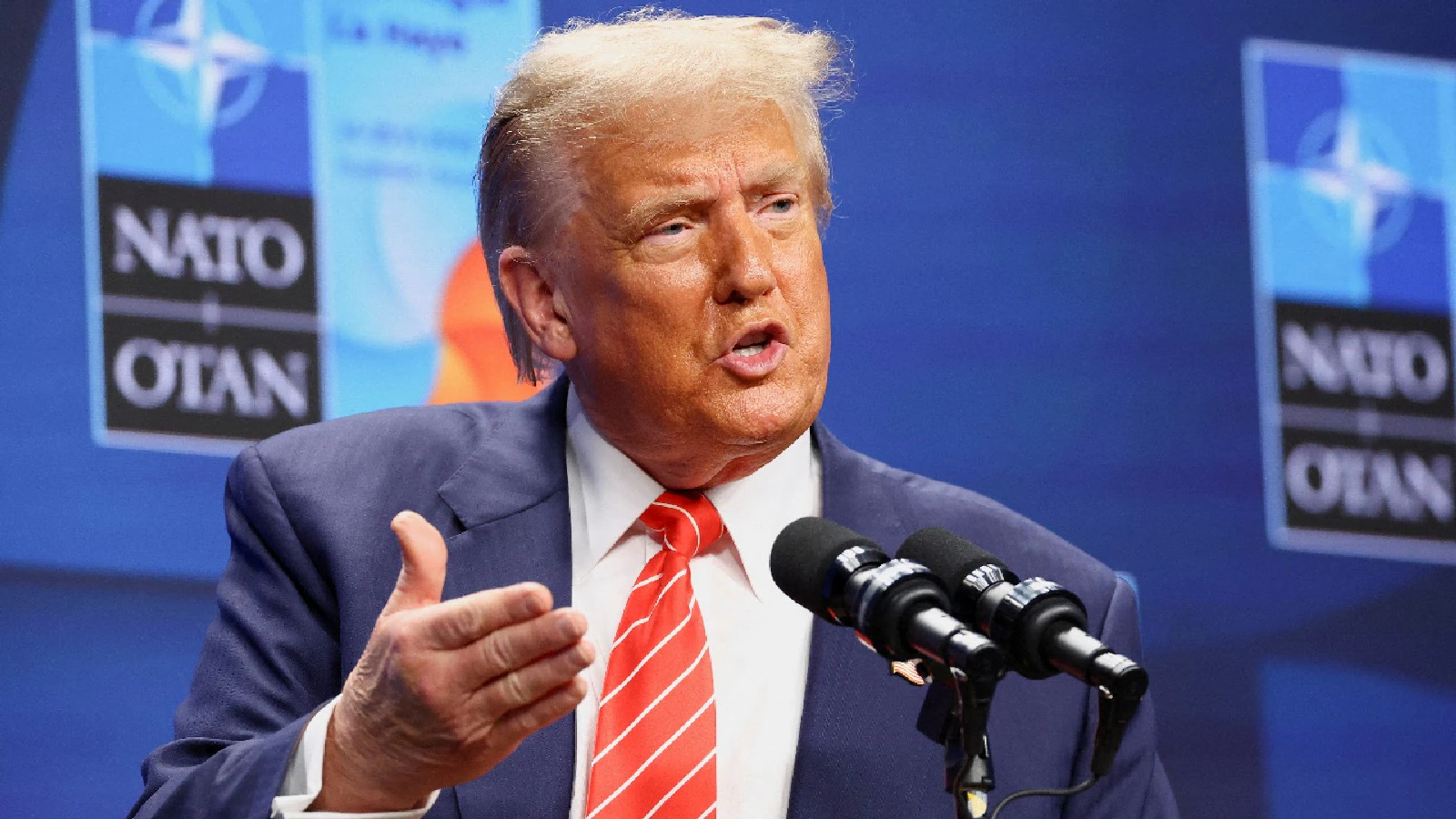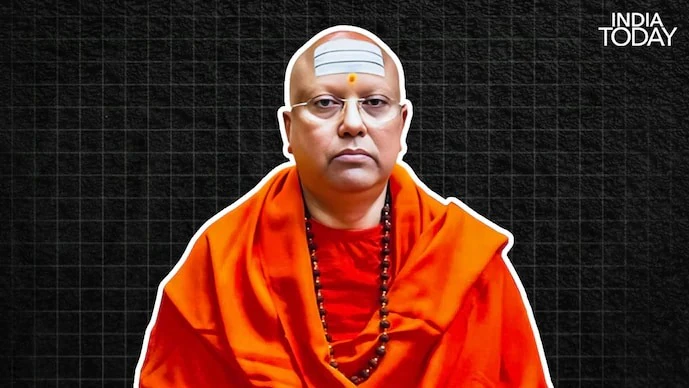Trump’s 100% Film Tariff: Is It Even Possible, And What Would It Mean For Indian Cinema?
By Karishma Jain,News18
Copyright news18

On 29 September, US President Donald Trump took to his social media platform Truth Social and declared that he would impose a 100 per cent tariff on all movies made outside the United States. He claimed that other countries had “stolen” America’s movie-making business, likening it to “stealing candy from a baby,” and blamed California’s leadership for letting Hollywood’s dominance erode.
This was not Trump’s first swipe at the film trade, he had made a similar statement in May, but the latest post goes further by linking it directly to California’s economy. It also represents the first time a US administration has proposed tariffs in the realm of digital entertainment. Until now, American trade policy has targeted tangible goods like steel, automobiles or electronics.
How Important Is The US Market For Indian Films?
For Indian cinema, the United States has become one of the most prized overseas markets, thanks to its sizeable South Asian diaspora and steady appetite for Bollywood and regional films. As per a News18 report, the US box office contributes 35 to 40 per cent of Bollywood’s overseas revenues, while Business Standard report estimated that in 2024, the American market accounted for Rs 600–800 crore, or around five to seven per cent of India’s overall collections.
Across Hindi, Tamil, Telugu and Malayalam films, the US generates between $100 million and $150 million annually. Recent hits underline this dependence. Kalki 2898 AD earned $18.3 million in the US, making up 14.5 per cent of its global revenue. Pathaan grossed nearly $18 million, Jawan brought in $15.2 million, and RRR took $15.1 million in North America.
For Telugu cinema in particular, the US diaspora is a core audience, with premieres often scheduled around American holiday weekends. Losing such a market would not just dent revenues, it would reshape how Indian films are financed and distributed.
What Impact Could Tariffs Have On Bollywood And Tollywood?
The potential fallout is significant. A 100 per cent tariff would effectively double ticket prices, turning a $20 cinema outing into a $40 one. Such a spike could wipe out mainstream footfall.
Business Standard cited trade analyst Suniel Wadhwa’s estimate that this could cut Indian films’ US revenues by 30 to 40 per cent, with Bollywood tentpoles alone losing Rs 40–60 crore per release.
Distributors and exhibitors would inevitably respond to higher costs by cutting down the number of Indian films screened in American theatres. Movie trade analyst Girish Wankhede told BS that that Hindi and Telugu releases would feel the pinch most. At the same time, higher prices could push some audiences towards piracy.
The financial shock would not be confined to exhibitors. Pradeep Dwivedi, CEO of Eros Media World, told BS that Indian producers rely heavily on overseas revenues for budget planning. If those fall away, big films may need to be scaled back, restructured or shelved.
Independent and festival-oriented releases could avoid the US altogether. Filmmaker Priyanka Ghose told News18 that while very big films might still weather the storm, the rest of the industry would face difficult choices.
Why Streaming Is A Bigger Concern
Theatres may feel the impact first, but the longer-term risk lies with streaming. Trump’s post did not specify whether his tariff would cover only theatrical releases or also films carried on Netflix, Amazon Prime, Disney+ and Zee5. If streaming is included, the economics of Indian content in the US could change overnight.
OTT platforms have become an essential outlet for Indian cinema abroad. But a tariff could force streamers to renegotiate licensing deals, cut exposure to Indian titles, or reduce payments to distributors.
Moneycontrol reported that even the threat rattled markets, with Netflix’s stock dipping 1.5 per cent after Trump’s post. In the short term, such uncertainty may discourage distributors from buying rights, and in the long run, Indian titles may find themselves edged out of American catalogues.
Can The US Even Tariff A Movie?
This is where the idea runs into major legal and practical hurdles. Today, almost all films reach American theatres as Digital Cinema Packages (DCPs), encrypted files transmitted via satellite or secure servers. Streaming is entirely digital. The old practice of shipping physical reels, which could technically be taxed as imports, is obsolete. That leaves little tangible for US customs officials to intercept or tax at the border.
Trade law makes enforcement even trickier. Since the late 1990s, World Trade Organisation members, including the US, have observed a moratorium on customs duties for electronic transmissions. This agreement, renewed repeatedly, currently runs until March 2026. A 100 per cent tariff on digital film files would breach that commitment and expose the US to WTO disputes.
There is also the issue of classification. Under global trade rules, movies are treated as audiovisual services, not goods. The US itself benefits enormously from this framework, as Hollywood productions make it one of the world’s largest exporters of cultural services and intellectual property. Trying to tax films as goods would contradict that position and invite both international challenges and domestic lawsuits.
In theory, a tariff on physical film prints might still be technically possible, but in today’s digital distribution environment, that option is irrelevant. For digital files, enforcement would be shaky at best, and almost certainly challenged in court.
Why Bollywood Should Still Be Worried
Even without clear enforceability, uncertainty alone is damaging. Distributors hesitate to buy rights when they cannot predict costs. Studios delay or renegotiate deals. Producers scale back revenue expectations. In diaspora-heavy hubs such as Edison in New Jersey, Dallas and Fremont, even the threat of higher ticket prices could deter audiences.
The squeeze would hit mid-tier and independent productions hardest, while big-budget spectacles might continue to draw crowds despite the cost. Some producers may attempt workarounds by structuring films as co-productions or partial US financing to argue “domestic” status, but until rules are defined, such strategies remain risky.
Priyanka Ghose told News18 that cultural exchange through films is invaluable and should be encouraged, not restricted. Her warning highlights a broader concern: protectionism risks damaging not only box office figures, but also the cultural bridges Indian films have built with American audiences over decades.
Could Hollywood Also Face Retaliation?
Industry voices caution that Trump’s move could backfire. If the US taxes foreign films, other governments may respond in kind, targeting Hollywood releases abroad. That would hurt American studios, which dominate screens in India and much of Asia.
What Lies Ahead For Indian Cinema?
For now, Trump’s declaration is a political statement rather than a codified policy. There is no legal paperwork, timeline or clarity on whether tariffs would be calculated on production costs, box office revenues or distribution fees. Questions also remain over whether part-US productions would qualify as exempt.
If tariffs materialise, Bollywood may have to tilt even more heavily towards streaming, though that too faces a looming challenge. The expiry of the WTO’s digital moratorium in March 2026 could open the door to customs duties on OTT imports, a change that would transform the global economics of film distribution.
For India’s Rs 187-billion film industry, which, as per EY–FICCI data, contracted by five per cent in 2024 despite more than 1,600 releases, the loss or even uncertainty of the American market would come at a vulnerable time.



